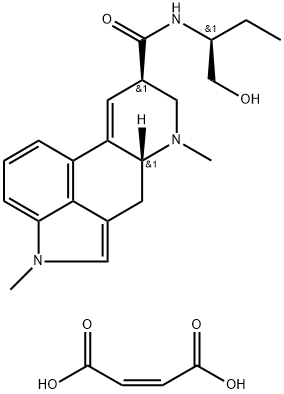Methysergide is an agonist of the serotonin (5-HT) receptor subtype 5-HT1 and an antagonist of 5-HT2 receptors. It binds to recombinant human 5-HT1A (KD = 23.44 nM), 5-HT1E (Ki = 229.09 nM), 5-HT1F (Ki = 33.88 nM), and rodent 5-HT1B receptors (KD = 1,513.56 nM). It also binds to recombinant human 5-HT2A (Ki = 2.69 nM) and 5-HT2C receptors (KD = 1.26 nM) and is an insurmountable antagonist at 5-HT2B receptors. It inhibits vasoconstriction induced by 5-HT in isolated postmortem human basilar arterial spiral strips (pA2 = 8.07). Methysergide decreases external carotid blood flow in a dose-dependent manner in vagosympathectomized dogs, an effect that is inhibited by the 5-HT1B/1D receptor antagonist GR127935 . It has antinociceptive activity in mouse models of pain induced by intrathecal injection of substance P , glutamate, NMDA , AMPA , or kainic acid. Methysergide reduces zymosan-induced paw edema in rats when administered at a dose of 10 mg/kg. Formulations containing methysergide were previously used in the prevention and treatment of vascular headaches.

